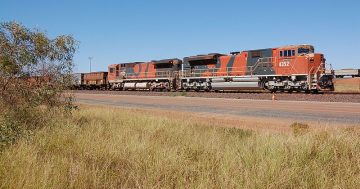Abi Tyas Tunggal* says a network effect is when a product or service becomes better as more people use it.
 By understanding network effects, you will be able to see which companies are building products that get better with scale.
By understanding network effects, you will be able to see which companies are building products that get better with scale.
The reason companies with network effects are valuable is because as they scale, they create barriers to exit for existing users (who don’t want to lose the benefit of the network/platform) and barriers to entry for new competitors (who don’t have access to the network which makes the business valuable).
Warren Buffett uses the analogy of a castle (business) and its moat (something that protects the business from competitors):
But all the time, if you’ve got a wonderful castle, there are people out there who are going to try and attack it and take it away from you.
And I want a castle that I can understand, but I want a castle with a moat around it.
You can think of businesses with network effects having moats that improve as they scale, to extend the castle metaphor – they get more soldiers (users).
This moat protects them from new competitors who want to steal from their castle.
With some of the most powerful network effects like Facebook, this can create a winner-takes-all market.
Facebook’s network effect
We think it’s important to not confuse viral growth with network effects.
Viral growth is all about the speed with which you grow.
If you have viral growth, you’re usually spending little to nothing on acquiring customers. There are exceptions to this…
Yes, Facebook had viral growth – they never really had to pay for users. Their MAUs (monthly active users) and DAUs (daily active users) grew like weeds.
But the one metric Zuckerberg cared about in the early days wasn’t linked to DAUs or MAUs, at least not directly.
According to Chamath Palihapitiya, Facebook’s first VP of Growth, their single point of focus was to get a user to reach seven friends in 10 days.
The reason is because without friends on Facebook (a network), the product is useless. The full video is worth watching.
The reason that Facebook is so valuable today (to the consumer side) is because all your friends are on Facebook, and the reason that all your friends are on Facebook, is because all your friends are on Facebook.
You can see how this is hard to replicate for social networks that are starting today.
Keep in mind, this was a retention measure rather than a growth measure.
Palihapitiya and Zuckerberg knew that what mattered was retention of users because the only way Facebook become valuable was by having more users. DAUs over MAUs.
More proof: when Zuckerberg launched at Harvard he could have easily opened it up to the public. They didn’t.
Zuckerberg focused on getting 80 per cent of Harvard students on Facebook before expanding.
That’s an extremely high bar but whether he knew it or not – he was focusing on the value of the network above short-term growth.
Network effects are chicken/egg problems.
Network effects are special
When you hop on a plane, are you happy when it’s completely full? Or when you visit your favourite restaurant, are you stoked to wait 15 minutes for a table?
In these cases, you’re not getting any additional value for the product or service being used by more people.
If anything, you’re getting less value. Now contrast that back to Facebook.
The more people that use it, the more that you want to use it.
The same is true for advertisers on Facebook, which is where Facebook makes all their money.
If advertisers want to reach the most amount of people, for the lowest cost with the best targeting, the only choice is Facebook.
Think about it like this: Facebook pays you no money to create content that is interesting to your friends which allows them to sell ad slots to advertisers because your content is keeping your friends on site.
But the value of the network is so good, that you don’t mind.
The same is true for publishers on Facebook, think the New York Times or AFR.
They get no money for posting their content on Facebook, but Facebook is indirectly making money from them by showing ads around that content.
Yet publishers still do it because Facebook provides them with access to the network.
And Facebook can leverage this network to gain users for its other networks.
You only have to look at what happened to Snapchat when Instagram started to roll out similar features because of the larger audience it brought on more and more users.
There are billions of monthly active users on Facebook. WhatsApp and Messenger both themselves have billions of users.
All of these are growing at rates faster than Facebook’s historic rates. As a community, Facebook users are larger than most religions.
Improving with scale is one of the most valuable things a business can do. Always take the time to understand whether a company has a network effect.
Even small networks can provide powerful moats – and the bigger they get, the better they get.
The only issue is how hard they are to build in the first place, if someone bigger than you exists it’s almost impossible to get past their moat and into the castle.
*Abi Tyas Tunggal is a contributor at Spaceship.
This article first appeared at spaceship.com.











